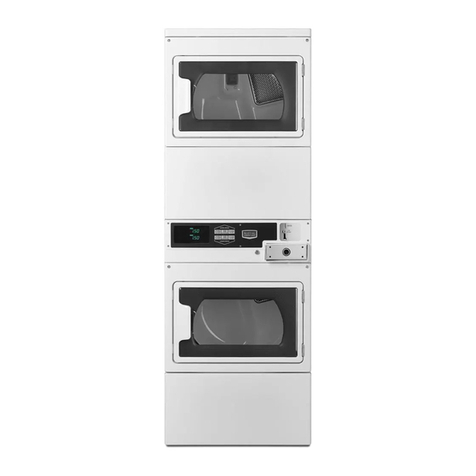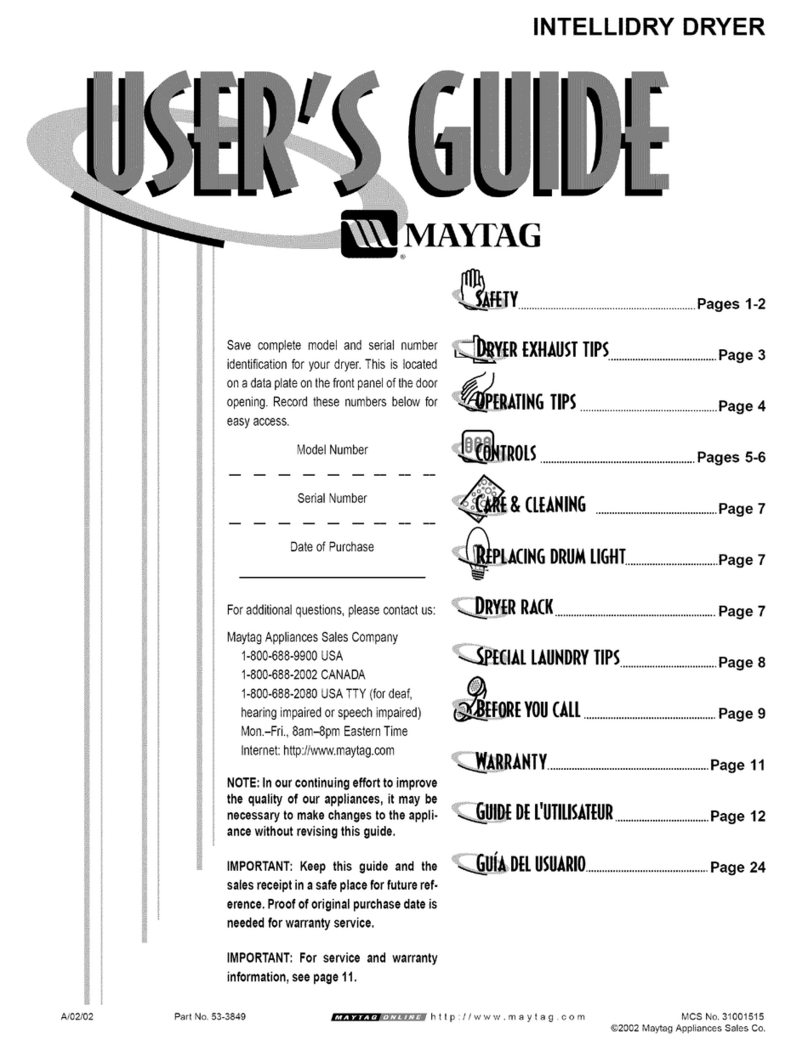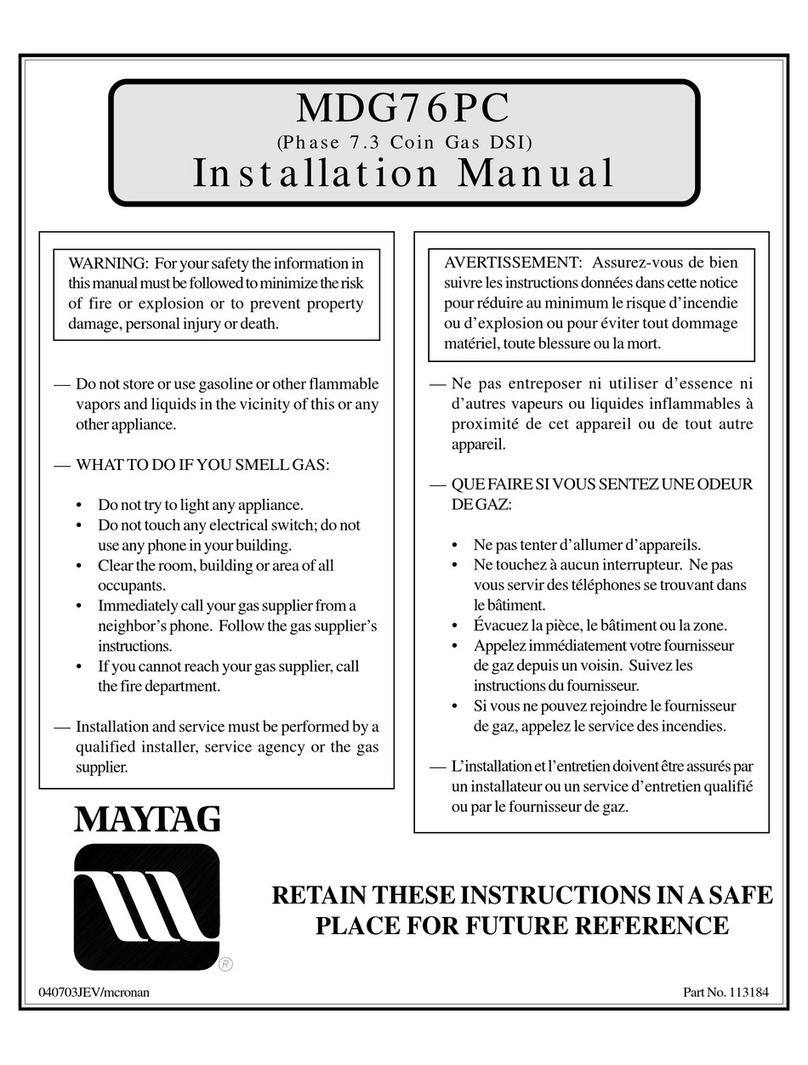Maytag MDG30V User manual
Other Maytag Dryer manuals
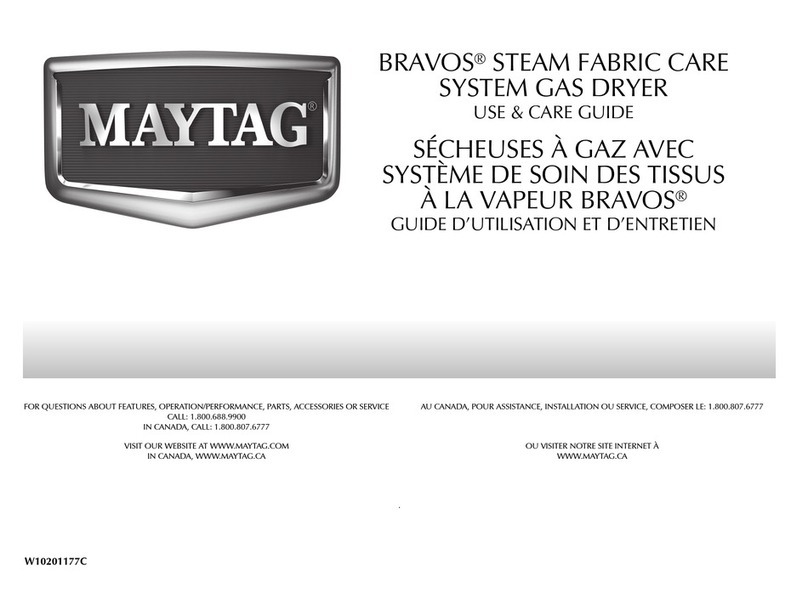
Maytag
Maytag Bravos W10201177B User manual

Maytag
Maytag MED5900TW0 User manual
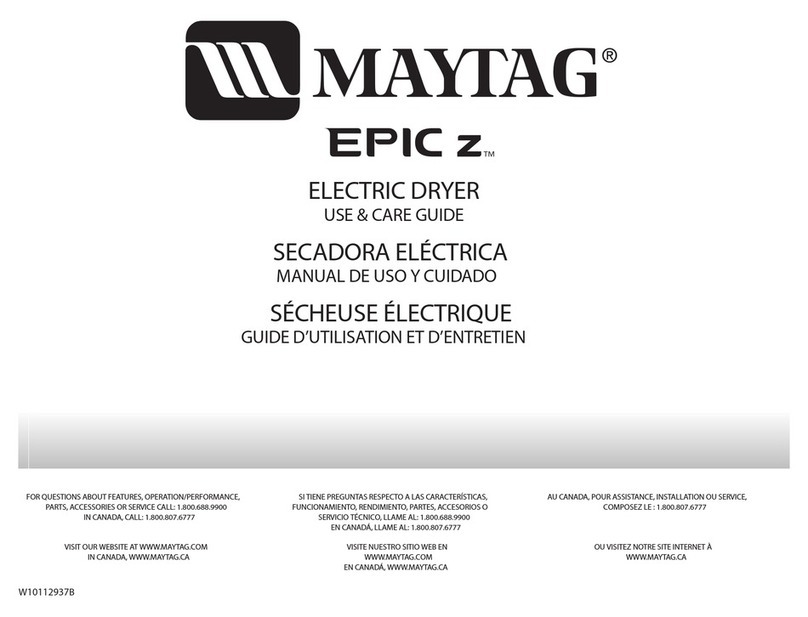
Maytag
Maytag Epic z W10112937A User manual
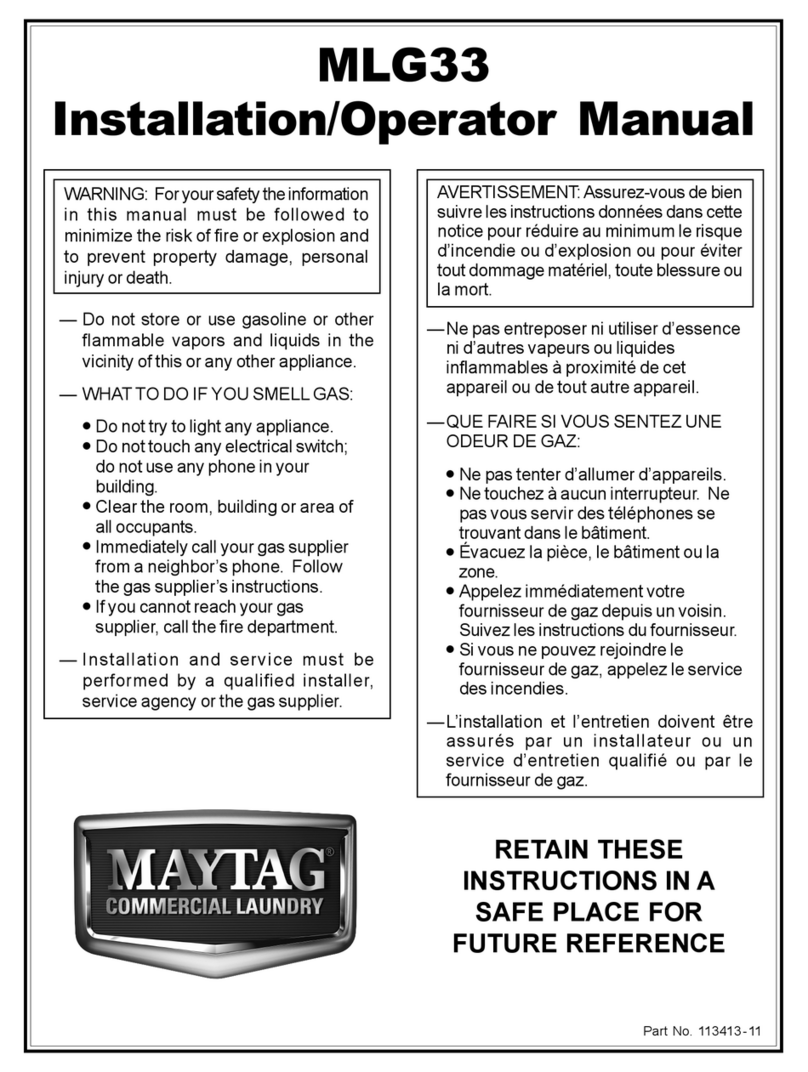
Maytag
Maytag MLG33 Administrator Guide
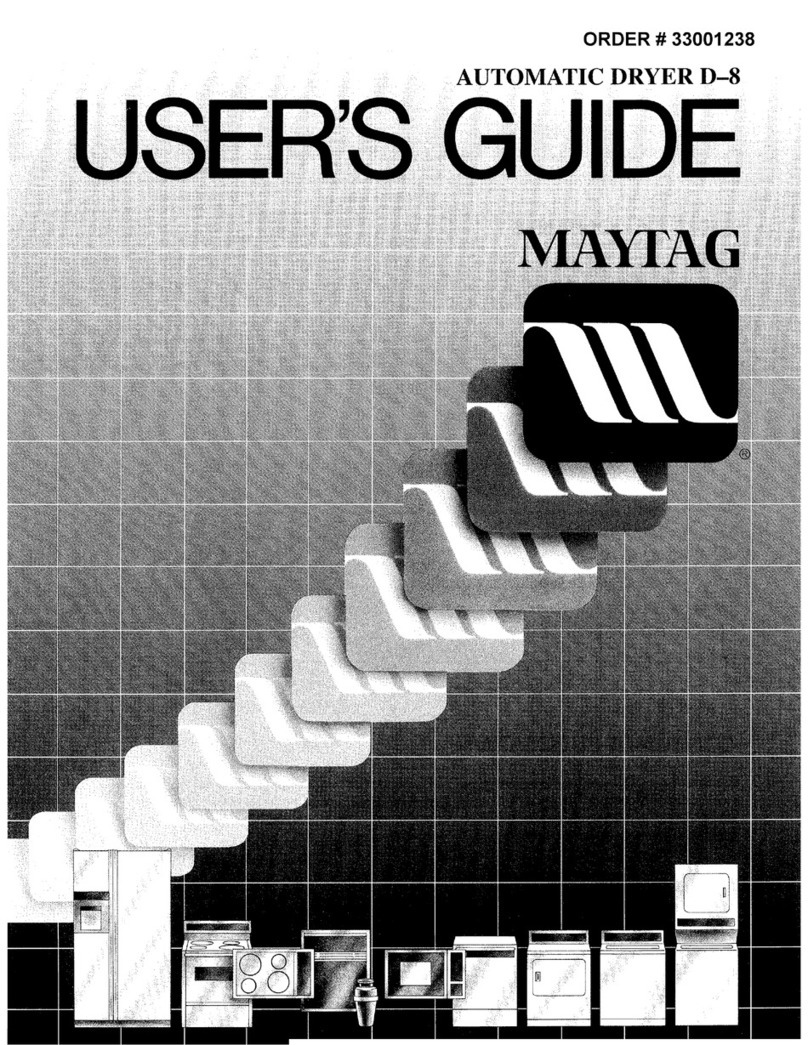
Maytag
Maytag D-8 User manual

Maytag
Maytag MEDE201YW User manual
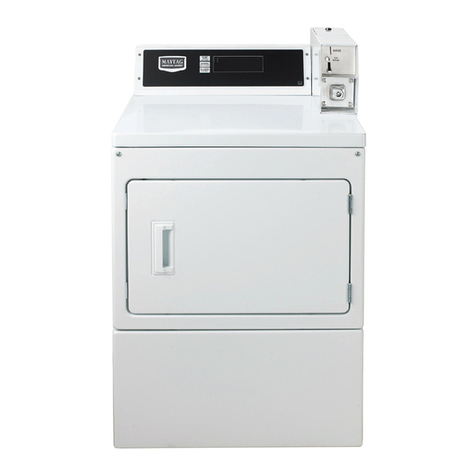
Maytag
Maytag MDE18PD User manual
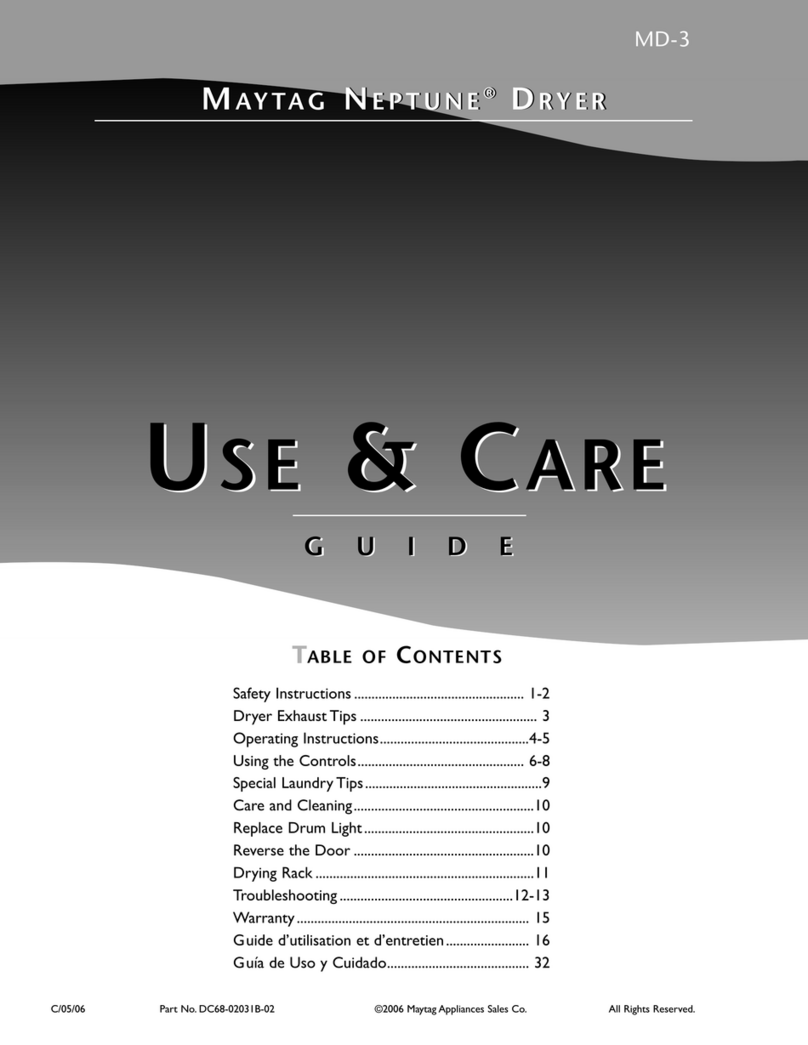
Maytag
Maytag Neptune MDE9700AYM User manual
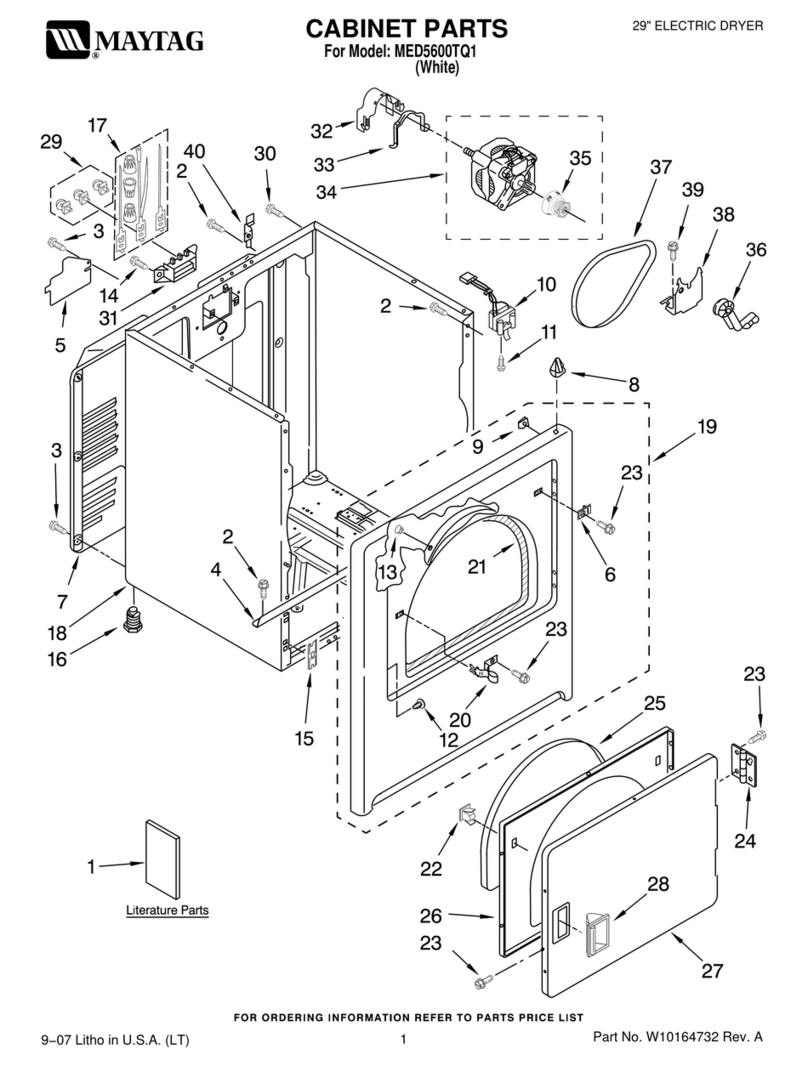
Maytag
Maytag MED5600TQ1 User manual
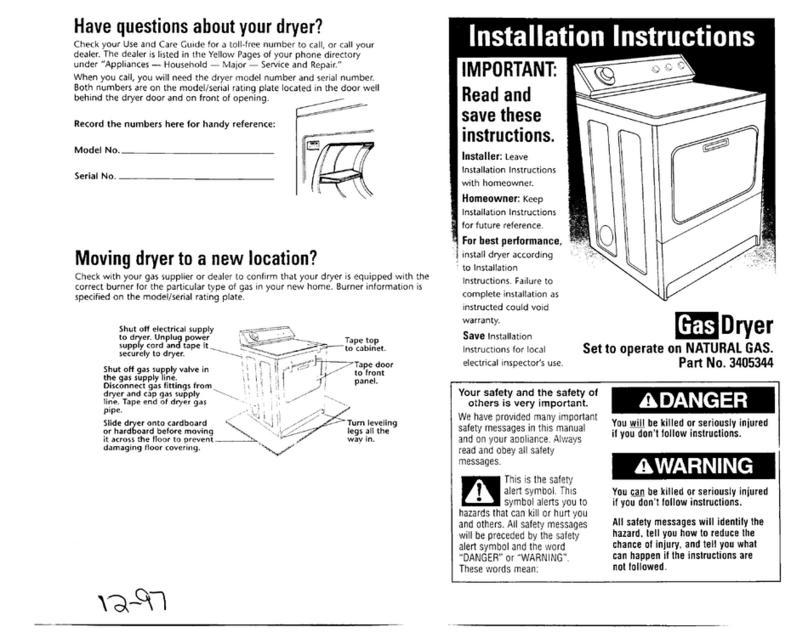
Maytag
Maytag 3405344 User manual
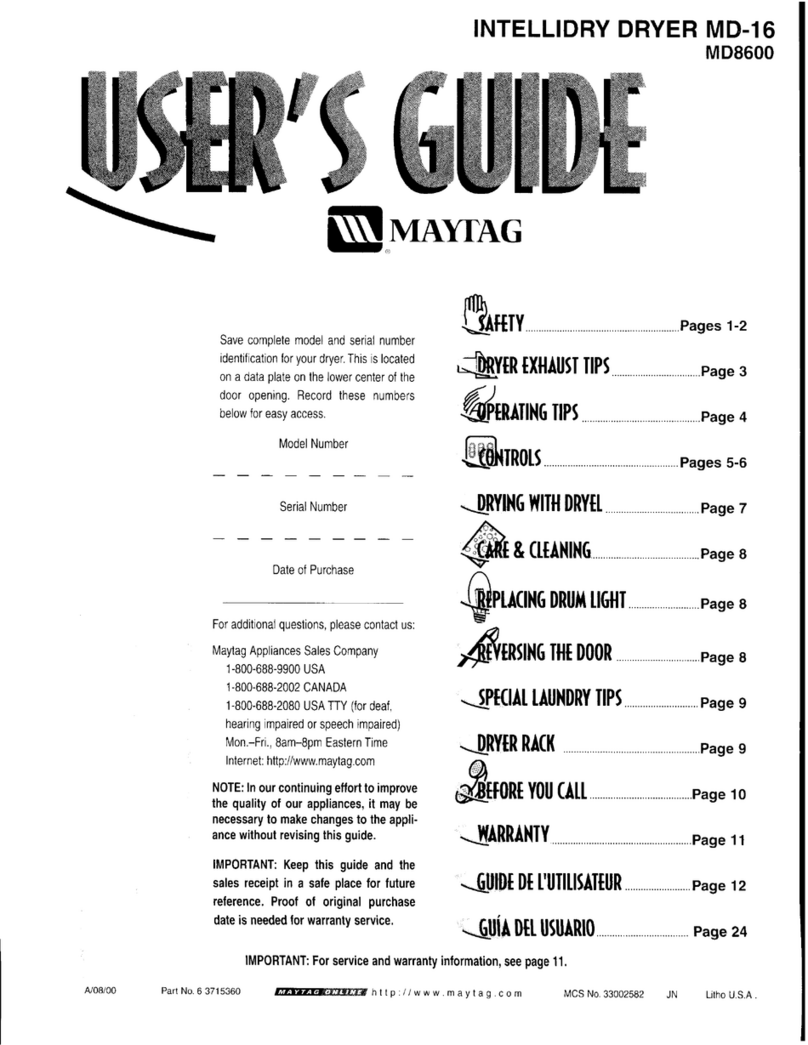
Maytag
Maytag MDG8600 User manual
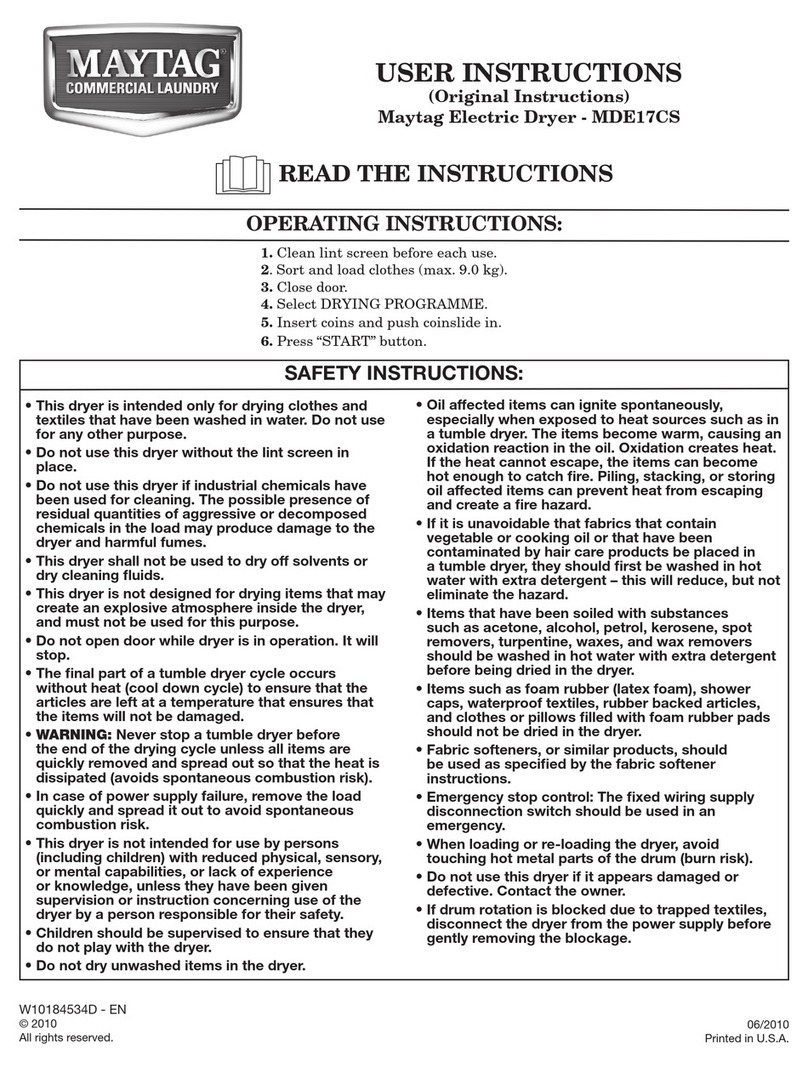
Maytag
Maytag MDE17CSBGW User manual

Maytag
Maytag MEDC500VW - Centennial Series 29 Inch Electric... User manual
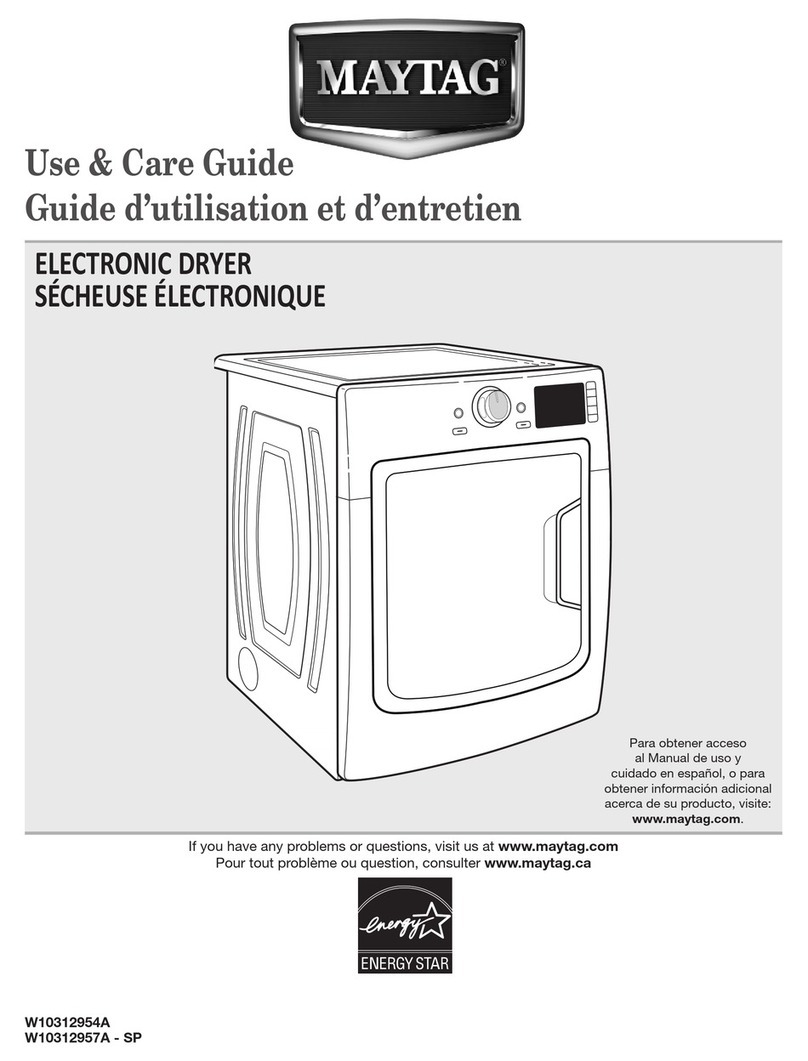
Maytag
Maytag W10312954A User manual

Maytag
Maytag W10239302B User manual
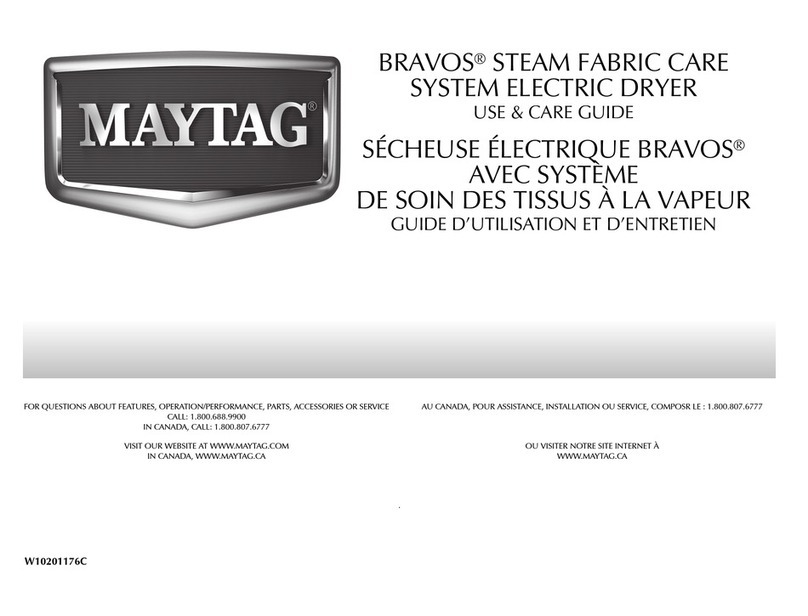
Maytag
Maytag BRAVOS W10201176C User manual
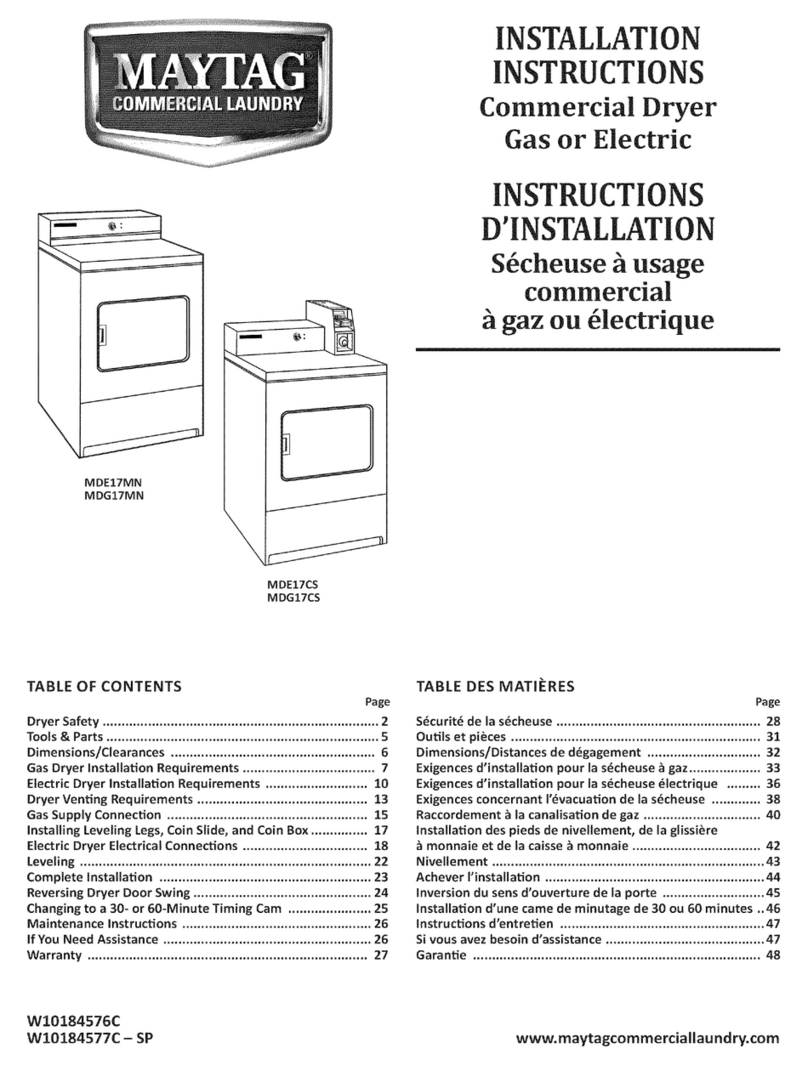
Maytag
Maytag MDE18CSAZW0 User manual
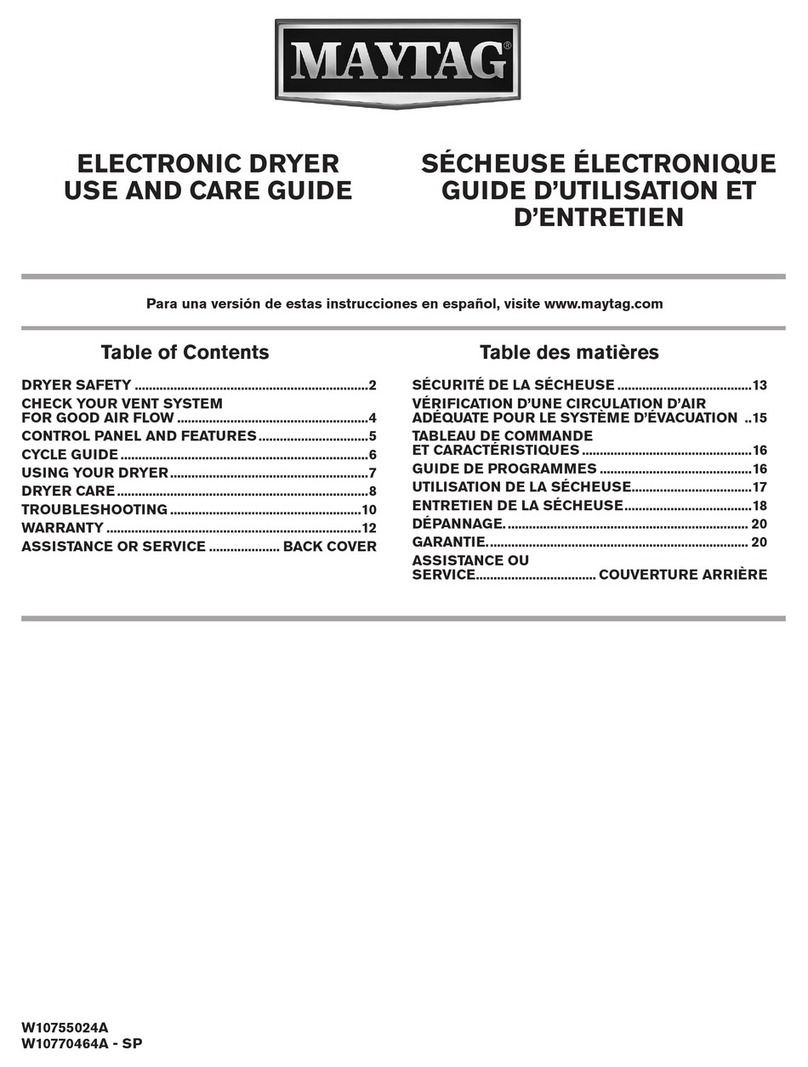
Maytag
Maytag MEDP475EW User manual

Maytag
Maytag MEDC215EW Installation instructions
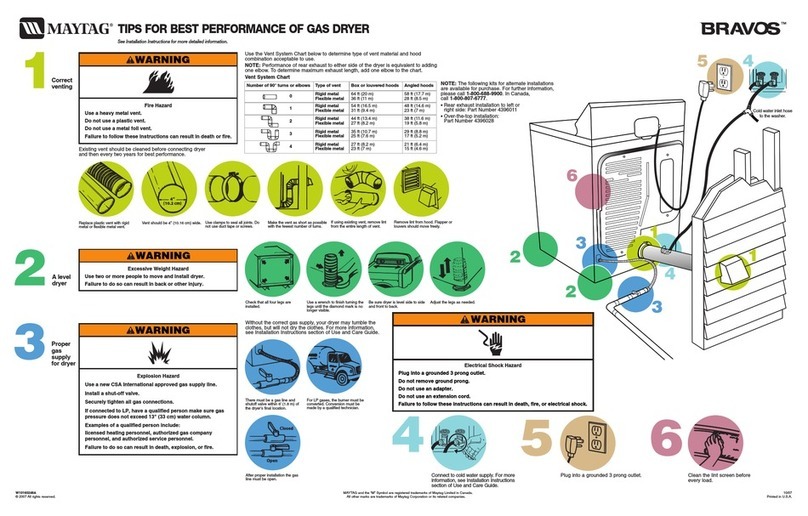
Maytag
Maytag MGD6600TQ - R BravosR Steam Gas Dryer User manual
Popular Dryer manuals by other brands

Alliance Laundry Systems
Alliance Laundry Systems TMB795C Installation

Asko
Asko T793C operating instructions

Kenmore
Kenmore 8041 - 5.8 cu. Ft. Capacity Electric Dryer installation instructions

Frigidaire
Frigidaire CAQE7077KW0 use & care

Bosch
Bosch WTX8HKM9SN User manual and installation instructions

Sharp
Sharp KD-NHH9S7GW2-PL user manual
